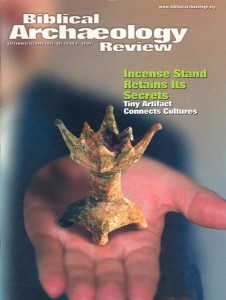Rare Incense Altar Raises Burning Questions

Khalil Iskander Shahin, whom everyone called “Kando” even then, slowly pushed the little bronze incense altar across the glass case in his Bethlehem antiquities shop. The year was 1953. He had not yet moved to Jerusalem, where to this day his sons continue to run his antiquities business near the École Biblique et Archéologique Française. Indeed, in 1953, Kando, a cobbler, had only just begun selling antiquities in his shop.
The altar’s prospective buyer was none other than John Marc Allegro. Allegro had just come to Jerusalem as part of an eight-man international team to edit and publish the thousands of scroll fragments that were already coming out of Qumran’s Cave 4, near the Dead Sea, and that Kando was selling to the scholarly community on behalf of the Bedouin who were unearthing them. Allegro would later turn out to be the most controversial member of the scholarly team. For one thing, he was the only atheist among them—most were Roman Catholic priests. John Strugnell of Harvard, a convert to Roman Catholicism, called Allegro the “stone in the soup.” To the dismay of his colleagues, Allegro soon concluded that the Dead Sea Scrolls anticipated much of the history and many doctrines of early Christianity—a view that he popularized both on the radio and in London newspapers.
Already a library member? Log in here.
Institution user? Log in with your IP address.

